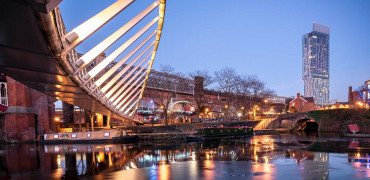We’ve written before about the important changes to the UK Building Regulations that are now in place, are coming, or are being proposed and I’d like to focus your attention on the proposed new Part Z, which targets embodied carbon in buildings.
If you would like to know more about Part L. Part F, or Part O of the current Building Regulations, my colleague wrote a brief blog about it which you can view here.
The issue of whole-life carbon isn’t a new thing, but it has come to the fore in recent years, with clients asking major construction companies to focus on reducing embodied carbon within the projects they are designing and building, to help them achieve their own corporate net zero carbon goals.
The proposal would ensure that embodied carbon emissions are capped on all major construction projects
A shared approach
The bodies that have come together to focus on this have set up a dedicated website to explain the rationale behind the proposal, which looks to limit embodied carbon emissions for all “major building projects”.
This industry-proposed amendment to the UK Building Regulation 2010 has been authored by a joint panel including representatives of CIBSE, Institution of Structural Engineers, RIBA and RICS
As the website states: “Due to the significant contribution that the embodied carbon of buildings makes to the climate emergency, there is a need to introduce legislation towards mandatory reporting of carbon emissions in the built environment, along with limiting embodied carbon emissions on projects.”
The proposal details a proof of concept of the regulation required which, if enacted, would help to ensure that embodied carbon is assessed on all major projects, as part of a comprehensive assessment of the whole life carbon within the building.
The proposal introduces mandatory assessments ahead of setting carbon limits, giving time to converge on robust yet ambitious targets.
Crucially, if adopted, the proposal would also ensure that embodied carbon emissions are capped on all major construction projects.
It is also aligned with statements and recommendations from RICS (Royal Institution of Chartered Surveyors); RIBA (the Royal Institute of British Architects); IStructE (the Institution of Structural Engineers); CIBSE (the Chartered Institution of Building Services Engineers), UKGBC (the UK Green Building Council) and LETI (Low Energy Transformation Initiative).
The time to act is now
With such an illustrious collection of major industry bodies coming together to push for this to become part of the Building Regulations, it is clear to see the direction of travel and it is highly likely that, before too long, embodied carbon WILL become a part of the rules affecting the built environment.
What this means for the construction industry in general, and individual building owners in particular, is that embodied carbon is increasing in importance as a major consideration when they are planning any new building or major refurbishment to an existing building.
We’ve written before on our blog site on how global financial institutes are already focusing in on sustainability as never before.
For building owners, this focus on taking a long-term view of a building or ‘asset’ is demanding change in the way buildings are planned for, constructed and renovated.
Now, with a focus on embodied carbon, the focus shifts very much to the operating life of the building, with the carbon embodied in every single component, being considered.
For us as a manufacturer of the HVAC equipment being used to keep buildings warm, cool and comfortable throughout the year, we already know the value in choosing the most energy efficient equipment and maintaining these systems to operate as efficiently and effectively as possible, throughout their working life.
We also understand why embodied carbon is becoming such a major topic.
That is why we have started the process of calculating the embodied carbon in our own equipment – something we are one of the first to publicly list.
We have also created a dedicated team to help our customers through the changing legislative landscape. We work with clients to deliver energy efficient, low carbon HVAC for their buildings.
Our Sustainability and Construction team is unique in the industry, because we know what we are talking about and we know that we can help.
We offer the ability to share and discuss your target project outcomes with knowledgeable, experienced building services professionals that can provide advice and input on how you could achieve Net Zero targets.
If you would like to know more, please visit our website and do please get in touch.
Chris Newman is Zero Carbon Design Team Manager at Mitsubishi Electric



